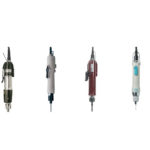Table of Contents
Lately, the demand for hand sanitizers with active ingredients ethanol (ethyl alcohol – etoh) and isopropyl alcohol (IPA – propyl alcohol) have renewed demand.
When hand sanitizer demand grows faster than the supply, people find DIY methods or alternative sources for sanitizer. Commercially, distilleries were quickly able to create new, cost effective formulations and improve access for local demand.
Some wish to make hand sanitizer themselves, others prefer to buy professionally manufactured hand sanitizer such as Purell or Germ-X. Some require very large ethanol quantities by the barrel or tanker truck for commercial production.
Downsides of Homemade Hand Sanitizers
The World Health Organization even provides its own hand sanitizer production guide for regions where commercial sanitizer products are not readily available.
Homemade formulations have rather pungent odors and additives which make the experience rather unpleasant compared to low odor, low residue hand sanitizer formulas. Likewise, the additional aloe Vera and other harsh-reducing products found in homemade hand sanitizer can create stickiness and leave behind gross residue.
Why Does Hand Sanitizer Smell Like Tequila or Gin?
Most had not encountered hand sanitizer that smelled like tequila before the 2020 pandemic. So what changed?
Odors are the result of organic contamination that can otherwise be filtered out by carbon filtration during the alcohol manufacturing process. Fruit and grain mixtures produce unique aromas and scents when fermented.
Carbon filtration systems are expensive and not something mission-critical for breweries and distilleries. Because distilleries can adopt similar production lines at relatively low expense, its relatively efficient. The downside is that the unfiltered alcohol passes along odors and aromas to the sanitizer.
Hand Sanitizer Recalls and Contaminants
There are significant differences in the main ingredients, type of alcohol, alcohol content, and various byproducts such as aloe, fragrances, and vitamin content.
In some cases, a lack of available chemical supplies has led to lower quality ingredients, fewer quality controls, and sometimes dangerous chemical additives.
What is Methanol? How Does it Get into Sanitizer?
Search trends show a growing curiosity about the dangers and hazards related to methanol and isopropyl alcohol. There are currently over 140 products on the FDA’s warning list of alcohol based hand sanitizers that contain methanol.
FDA testing indicates methanol contamination in hand sanitizer products ranging from 1% to 80%.
Methanol – methyl alcohol – 1-propanol is a wood alcohol, a substance which may produce toxicity when absorbed through the skin. When ingested, the substance is potentially lethal. Methanol exposure is a risk for children, as they are more likely to accidentally ingest sanitizer while also being more sensitive to trans-dermal adsorption (through the skin).
“Consumers who have been exposed to hand sanitizer containing methanol should seek immediate treatment, which is critical for potential reversal of toxic effects of methanol poisoning. Substantial methanol exposure can result in nausea, vomiting, headache, blurred vision, permanent blindness, seizures, coma, permanent damage to the nervous system or death.”
FDA
How Does Methanol Get into Hand Sanitizer?
Methanol is a much cheaper and more widely available alcohol during times of extraordinary demand. Methanol can be added to hand sanitizer for a number of reasons; either as a denaturant, an active ingredient, or added to hand sanitizer when either the manufacturers.
At least one distillery who manufactured and sold bulk disinfectants in 5-gallon jugs and 16-ounce bottles was served FDA warnings.
The company explains that the methanol (1.5%) was added to the sanitizer as a denaturant. Denaturants are chemical additives which deter consumption. The company did not intend malice. In fact, methanol was an on-label ingredient. The company was not aware that using methanol as a denaturant could produce unnecessarily toxic side effects.
Isopropyl Alcohol and Methanol
Is Methanol Dangerous?
According to the FDA, sanitizer with methanol content over 630 ppm is considered a hazardous substance and should properly destroyed following guidelines for hazardous waste disposal.
Methanol toxicity can occur via ingestion, dermal absorption, and inhalation.
A lethal does is approximately 30 to 240 mL or 1 gram per kilogram.
“Methanol is highly toxic, and severe systemic toxicity and even deaths can occur after oral, pulmonary and/or skin exposures. Therefore, methanol must never be used in alcohol-based hand rub, which mostly contains ethanol, isopropyl alcohol, n-propyl alcohol, or their combinations.”
Methanol as an Unlisted Ingredient Can Pose Serious Health Risk
Methanol Toxicity – John V. Ashurst; Thomas M. Nappe 2020.
Does Methanol Occur Naturally in the Human Body?
Low levels of methanol do occur naturally within health humans, plants, and animals. Fruits, vegetables, and alcoholic beverages contribute to baseline levels. Methanol production is attributed to anaerobic fermentation within the gut and the conversion of S-adenosyl methionine (SAM) to methanol by certain metabolic processes.
The body naturally eliminates methanol by converting its oxidation to formaldehyde and then to formic acid before excretion. (Dorkokhov et. al. Page 615) Unmetabolized methanol cannot be sufficiently cleared through the kidneys or lungs.
Problematically, the body cannot efficiently eliminate methanol without converting it to formaldehyde. Formaldehyde is considered a carcinogen, a problematic consequence of methanol exposure.
Sample of Background Methanol Levels in Everyday Items
Beer: 6 – 27 mg/l
Wines: 96 – 329 mg/l
Beans: 1.5 – 7.9 mg/kg
Lentils: 4.4 mg/kg
Carbonated beverages: ~56 mg/l
Fresh and canned fruit juices (orange and grapefruit juices): 1-640 mg/l (average of 140 mg/l)
Human body background level: 0.5 mg/kg (0.73 mg/l in blood)
Odor Free Hand Sanitizer
Hand sanitizer does not have to smell bad or leave behind residue and grime. If your current brand of hand sanitizer smells like tequila, gin, vodka, or Frankenstein’s foot you’ll appreciate Color Element. It finishes extremely clean and the pure alcohol is a barely noticeable odor. It evaporates quickly and contains squalane, a plant based bio friendly moisturizer (not to be confused with a squalene). Unlike Aloe Vera, it doesn’t produce the same slimy goopy feeling and you wont feel the need to wash your hands after dispensing and applying.
Where Can I Find Hand Sanitizer In Stock?
We often field inquiries from customers who have needs for varying size and quantity of chemicals and solvents.
Production Automation Corporation (PAC) is a one stop shop for many commercial and industrial related supplies including masks, hand sanitizer, protective garments, workstation solutions, and more.
The reason PAC (that’s us) carries high purity ethanol, isopropyl alcohol, and other disinfectants is because our customers often demand it for advanced and critical manufacturing processes. FCC and USP grades are laboratory tested and standardized as extraordinarily pure alcohol formulations. This is valuable in a number of instances, especially when alcohol based ingredients come in contact with sensitive components, food surfaces, skin, instruments, or membranes.
Related Posts
- Steinel Heat Guns
Production Automation is excited to announce that we will now be offering Steinel Heat Guns! Steinel uses cutting edge technology to develop innovative solutions for today's world. High standards at every level of product design…
-
Find Delvo Torque Drivers at PAC!
Production Automation is pleased to announce that we are now a distributor for Delvo torque drivers! Nitto Kohji's Delvo electric screwdrivers are high quality tools for professional use.
-
Where Can I Buy Hand Sanitizer in Bulk at Wholesale Prices?
When you buy hand sanitizer in bulk at PAC, case discounts are built directly into the website during checkout. As your quantity increases, the price will adjust to reflect your discounted case pricing (if applicable).…
-
Where Can I Buy Hand Sanitizer in Bulk at Wholesale Prices?
When you buy hand sanitizer in bulk at PAC, case discounts are built directly into the website during checkout. As your quantity increases, the price will adjust to reflect your discounted case pricing (if applicable).…
-
Where Can I Buy Hand Sanitizer in Bulk at Wholesale Prices?
When you buy hand sanitizer in bulk at PAC, case discounts are built directly into the website during checkout. As your quantity increases, the price will adjust to reflect your discounted case pricing (if applicable).…
-
Where Can I Buy Hand Sanitizer in Bulk at Wholesale Prices?
When you buy hand sanitizer in bulk at PAC, case discounts are built directly into the website during checkout. As your quantity increases, the price will adjust to reflect your discounted case pricing (if applicable).…
-
Where Can I Buy Hand Sanitizer in Bulk at Wholesale Prices?
When you buy hand sanitizer in bulk at PAC, case discounts are built directly into the website during checkout. As your quantity increases, the price will adjust to reflect your discounted case pricing (if applicable).…
-
Where Can I Buy FDA Approved KN95 Masks?
When you buy face masks from PAC you'll have the benefit of masks shipped from USA warehouses, in-stock availability, and bulk pricing.
-
What's a Medical Mask? Why is It Different from a Procedural Mask?
Medical masks by definition, must be validated at a minimum of ASTM Level 1.
-
Ethanol & Isopropyl Alcohol: Your Questions Answered
The internet's guide to frequently asked questions about Isopropyl alcohol. Find answers to questions about IPA use, sanitizers, and dilution.
-
Droplets vs Airborne - Science of Airborne Droplets, Aerosols, Particles, and Face Masks
Aerosols vs Droplets - does COVID-19 spread by aerosols or droplets? Does evidence support airborne coronavirus? 15+ studies on COVID particle size, droplets, ventilation, and face masks.
-
CleanPro PlexiGlass Shields for Food Service, Restaurants, Hanging Workstation Dividers
Production Automation Corporation (PAC) carries a range of workstation dividers, mounts, and Plexiglass shields. Every workstation and business is unique, therefore we've procured a number of different mounts and configurations for your needs. CleanPro® sneeze…
-
Where Can I Buy Hand Sanitizer in Bulk at Wholesale Prices?
When you buy hand sanitizer in bulk at PAC, case discounts are built directly into the website during checkout. As your quantity increases, the price will adjust to reflect your discounted case pricing (if applicable).…
-
Mobile Hand Washing Stations and Sinks for Manufacturing
Portable hand sinks have internal water supply and waste water storage. The standalone unit with powered pump supply requires no additional plumbing, drains, or inlets.
-
3D Printing Fume Extractors for Odors and Particles
Does a HEPA filter capture ultrafine particles (UFPs). What toxins does 3D printing produce? Why should every 3D printer have both a activated carbon and HEPA filter?













